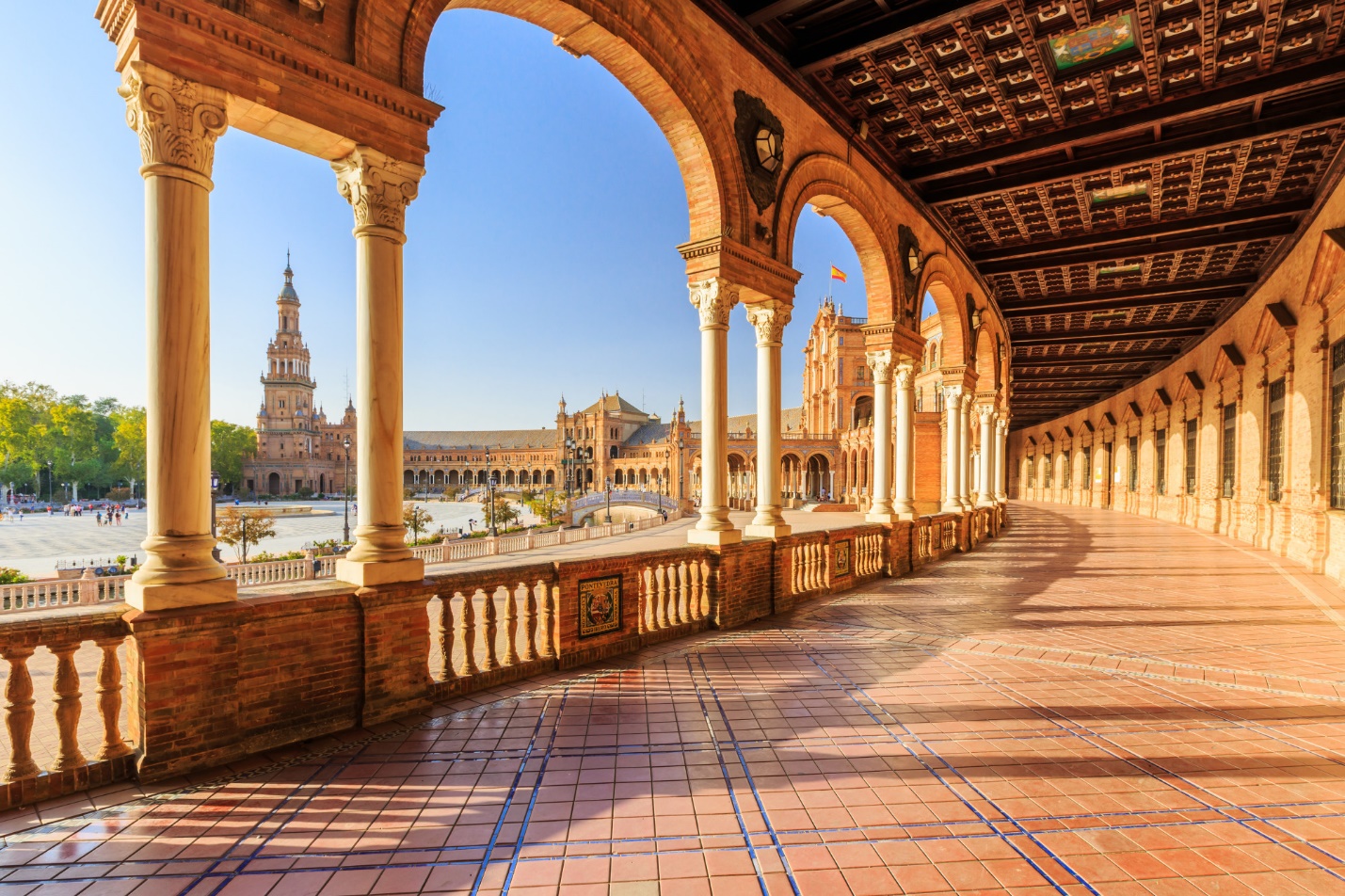Spain is an amazing and unique country that everyone should visit at least once in their lives.
Chances are, if you go once, you’ll fall in love with it and will want to return time and time again. A single vacation in Spain will first ignite this long-term love affair.
Spain is part of Europe, but it is vastly different than any other county on the European continent. You’ll find an intersection of European, African, and Middle Eastern culture here; you’ll see it in the architecture and you’ll taste it in the food. Spain has beautiful – albeit rather warm – weather throughout most of the year, friendly people, great music and culture. You’ll immediately be enamored with all of it the second you step off the plane.
If you’re planning your first trip to Spain, you may feel overwhelmed by all the information you’ve read and you may not even know where to begin. This guide will help you discover how to vacation in Spain and how to do it right. Follow these tips and you’ll have a trip that you’ll treasure always and you’ll make impressive memories that will last a lifetime. Read on!
Where to Go in Spain
There is so much to see and do in Spain. Many people who visit this country underestimate the vast size of this country and end up planning far too many destinations and activities during too short a time. Take your time and relax and don’t rush. You’ll want to soak it all in.
Further, you’ll find that in many places in Spain, life may move a bit slower than you’re used to; embrace that, don’t fight it.
Spain’s two biggest cities are Barcelona and Madrid and both are glorious and impressive. These cities both offer much of what you would expect from large cities, and more. There are sights to see, traffic, noise, beautiful architecture, foods of all kinds, lots of shopping, and tons of history. Many people count both of these cities among their favorites in the world.
However, there is so much more to Spain and make sure you see the countryside and coast. Be sure to take time to travel outward from the larger cities; take the time check out regions like Andalusia, Galicia, Rioja, and Malaga as well.
Spain’s Best Attractions
There are so many different attractions throughout Spain that there truly is something for everyone.
Barcelona is known for nightlife and world-renowned cuisine along with incredible historical buildings and one of the best history museums in all of Europe. Madrid, the country’s capital city, features the Royal Palace, the main square, Plaza Mayor, and the breathtaking and gigantic Prado art museum.
If you love the beach, you’ll want to spend time on the Mediterranean coast, otherwise known as the Costa del Sol, and if mountains are your thing, you’ll love setting aside some time to hike in the Pyrenees Mountains or in the Sierra Nevada region.
Religious folks will be amazed by Spain’s incredible churches and cathedrals like La Sagrada Familia in Barcelona and The Mezquita de Cordoba or by walking along El Camino de Santiago (The Way of Saint James), a historic pilgrimage route.
Spain is also known for its festivals. Many enjoy watching Pamplona’s famous Running of the Bulls in July, or the large-scale tomato fight in Bunol in August. There are hundreds of amazing, unforgettable events you can attend in Spain.
When to Go to Spain
Spain is pleasant all year round, but the peak season is in the summer. This can result in higher prices on accommodations and food and also lots of crowds.
Smart travelers prefer to visit Spain in the shoulder season during the spring or autumn. Winter isn’t a bad choice either; it’s still quite warm across most of Spain even in the winter months, but bring warm clothes and prepare for occasional snow if you plan on visiting the mountains.
Where to Stay in Spain
Spain is actually a bit more affordable when it comes to both accommodations than many other European countries. If you are trying to visit on a budget, there are many hundreds of hostels available to you; most of them offer private rooms as well as dormitory accommodations.
There are hotels at a wide variety of price points, too. You can stay in a very classy, high-end hotel like you might expect in other major cities around the world, or you can stay at small, family-owned and operated inns that will give you an up-close-and-personal look at how some of the locals like to travel.
Recent years have resulted in a boom in rental homes and apartments throughout Spain as well. People who wish to vacation in Spain for longer periods will have no difficulty finding long-term rentals through companies like Right Casa Estates and others.
Communication in Spain
Spain is like many countries in one. Although the Spanish people have a strong national identity, their regional identities are, in many areas, even stronger. Spain is made up of seventeen semi-autonomous regions, so you’ll often feel like you’ve crossed international borders even after only traveling for a short time.
Almost everyone in Spain does speak Spanish, but you are likely to overhear more localized languages like Catalan, Basque, Galician, Aragonese, Asturian, and Leonese when you travel around, so don’t be surprised if you don’t understand everything (or anything) even if you’re a native Spanish speaker. With that said, though, if you know Spanish, you will be able to communicate with most of the people you encounter.
But, don’t expect everyone to speak English, either. If you’ve traveled in Europe before, you may be used to finding English speakers everywhere you go, but this is not as common in Spain. People are friendly throughout the country and will do their best to help you as needed, but you may be hard-pressed to find English speakers when traveling outside of the major metropolitan areas.
How to Get Around
Spain has an excellent public transportation system so you can use it to get almost anywhere you’d like to go. The train system – part of the larger Eurail system – is vast and easy to navigate, but it can get expensive if you use it again and again over the course of a long trip. Many people prefer to take buses, which are a bit more affordable but just as extensive and simple.
Within larger cities, you can enjoy metro, light rail, and public bus systems as well as plentiful taxis. If you choose to rent a car within a city or between destinations, you’ll need to buy an International Driving Permit (IDP) for around 20 USD.
If you want to get from one side of Spain to the other side quickly, taking a budget airline might be your fastest and cheapest option.
Eating in Spain
The food in Spain is fantastic and if you haven’t eaten Spanish food before you will enjoy quite a culinary adventure during your time in this country. Just as different regions of Spain have different cultures and speak different languages, the food varies from place to place as well. Try it all. Most of it is friendly to all sorts of palates.
One thing you will notice when visiting Spain is that the country eats its meals on a different schedule than almost anywhere else. Lunch is generally in the mid-afternoon, anytime between one and four p.m. Locals rarely eat dinner before nine or ten at night, and many restaurants don’t even open for dinner until eight or so. If you eat at five or six, you’ll only be eating with other tourists.
When it comes to dining, you should also be aware of the concept of siesta here. While taking a break to rest in the afternoon can be a lovely diversion if you know it’s coming, it can be very frustrating if you aren’t ready for it. Most shops and businesses are closed daily from about two to five p.m., and the vast majority of bars and restaurants are not open for business from four until dinnertime.
Money in Spain
Spain started using the euro as its currency in 2002, so if you have traveled elsewhere in Europe you are likely already quite familiar with it.
Tipping is not as prevalent in Spain as it may have been in other places you’ve traveled; for most meals a euro or two per person is plenty, and if you’ve had particularly good service then five to ten percent at most is more than enough. At high-end hotels you will probably want to tip any staff that has been especially helpful to you, but it’s not required or expected there either. In general, tipping is not common in Spain, and most of the people you see tipping in any situation are likely tourists just like you.
Safety on Vacation in Spain
Just like anywhere else in the world, there is some crime in Spain and you need to be street smart to keep yourself and your belongings safe. Pickpockets and scammers are prevalent in the larger cities, especially in Barcelona. Always keep your valuables close to you and don’t be flashy with money or your possessions.
However, with that said, Spain is quite safe and violent crime against tourists is very uncommon. For the most part, even backpackers and solo travelers can travel safely in this country as long as they know to stay aware and to be careful, and it’s always a good idea to invest in travel insurance.
Happy Traveling
As you can see, you’ll absolutely adore a vacation in Spain, so what are you waiting for? If you haven’t planned a trip to Spain yet, get planning right away. A journey to this European country will change your life for the better forever, and after you visit once, you’ll likely want to come back time and time again, year after year. Enjoy!
If you’re looking for more great articles about travel in Arizona, Europe, and beyond, check out the Lifestyle section of our site for more!




